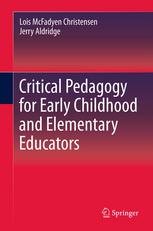

Most ebook files are in PDF format, so you can easily read them using various software such as Foxit Reader or directly on the Google Chrome browser.
Some ebook files are released by publishers in other formats such as .awz, .mobi, .epub, .fb2, etc. You may need to install specific software to read these formats on mobile/PC, such as Calibre.
Please read the tutorial at this link: https://ebookbell.com/faq
We offer FREE conversion to the popular formats you request; however, this may take some time. Therefore, right after payment, please email us, and we will try to provide the service as quickly as possible.
For some exceptional file formats or broken links (if any), please refrain from opening any disputes. Instead, email us first, and we will try to assist within a maximum of 6 hours.
EbookBell Team

4.7
26 reviewsAmong the welter of books on critical pedagogy, this volume will be especially valued for its direct focus on early years and elementary educators. Benefiting from the considered views of two veteran teachers of critical pedagogy, the volume is far more than a knowledge-rich resource, offering as it does vital support in applying the tenets of critical pedagogy to classroom practice. Alongside specific examples of teachers engaging in critical pedagogy in elementary and early-childhood classrooms, the material features close analysis and guidance that will help ease teachers into reflective practice in critical pedagogy that is based on praxis—the point at which theory and practice meet and interact. Indeed, the authors move readers even further than this, showing how students as well as teachers can transform their experience of education through critical reflection.
After surveying the field of critical pedagogy, the authors discuss the core precepts that inform the classroom practice of critical pedagogues. They move on to discuss how vital these early and elementary years are in forging children’s nascent identities. Other topics covered include discrimination, gender issues, the development of social justice projects, and the social transformations that critical pedagogy can manifest in the classroom. Finally, this resource explains how teachers can move forward in their classroom practice to enhance equity, justice and social responsibility. This book is essential reading for classroom practitioners in early and elementary education, whether neophytes or veterans, who are interested in deploying this powerful educational paradigm in their work.
After surveying the field of critical pedagogy, the authors discuss the core precepts that inform the classroom practice of critical pedagogues. They move on to discuss how vital these early and elementary years are in forging children’s nascent identities. Other topics covered include discrimination, gender issues, the development of social justice projects, and the social transformations that critical pedagogy can manifest in the classroom. Finally, this resource explains how teachers can move forward in their classroom practice to enhance equity, justice and social responsibility. This book is essential reading for classroom practitioners in early and elementary education, whether neophytes or veterans, who are interested in deploying this powerful educational paradigm in their work.